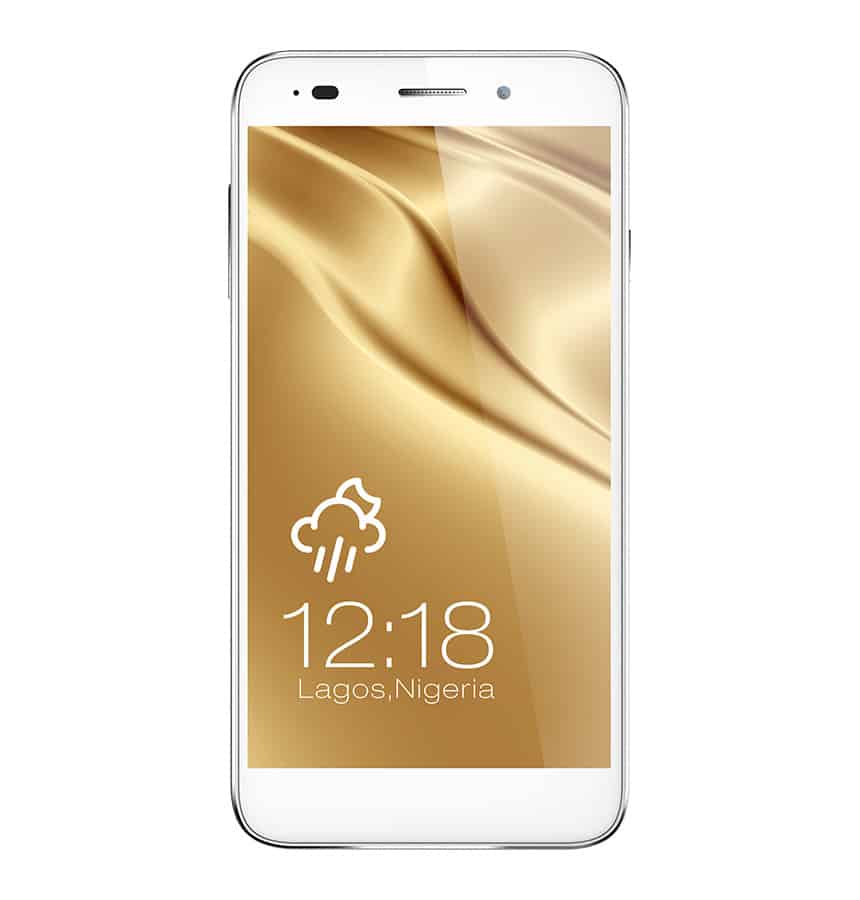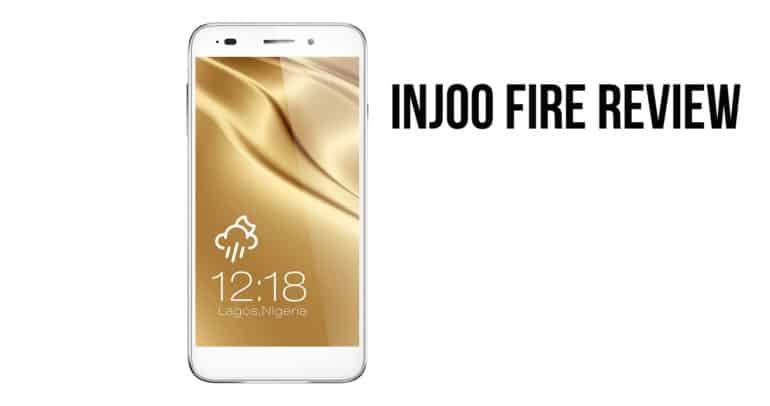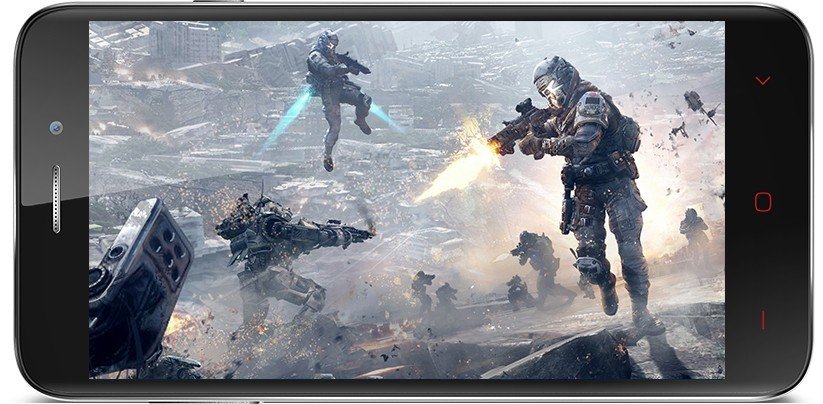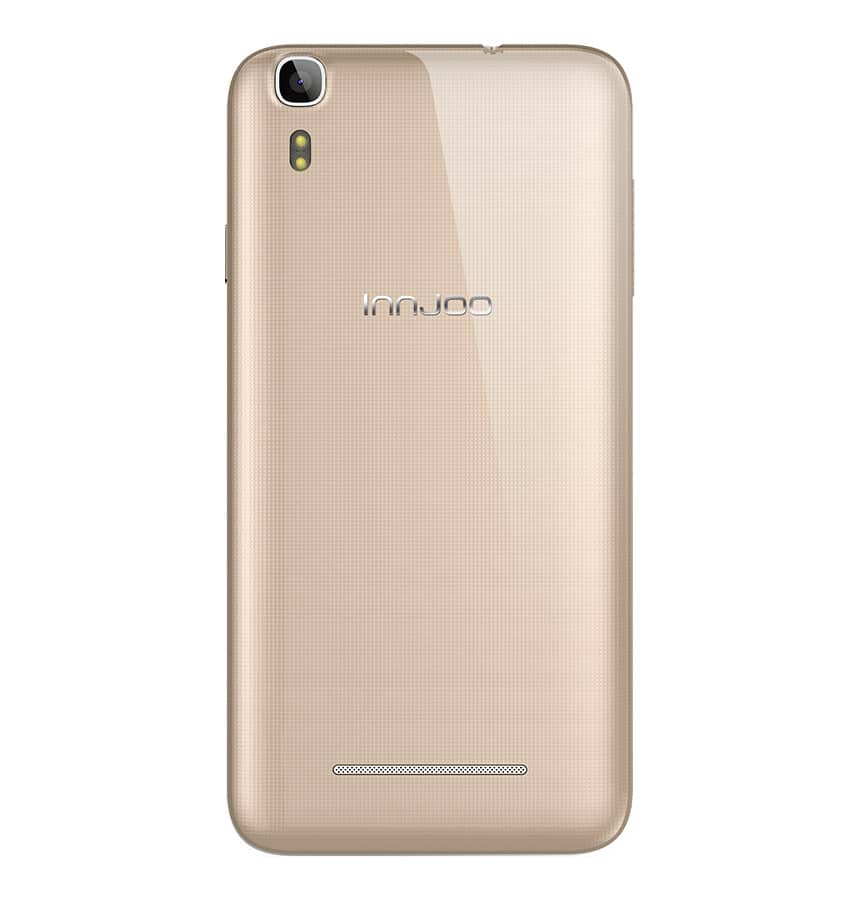With the smartphone revolution now picking up pace, its become a necessity for every major and minor player in the electronic market to come up with their own lineup of smartphones to keep their positions alive in the this highly volatile market. However, with that said, its also important for the brands to make sure that their smartphones adapt to the rapidly growing technology in order to stay relevant. Through the course of this year, we saw many companies fall prey to this tide, but when you see companies like Nokia go down, its an automatic reality check for every major player out there to go back to the drawing board and reassess their situation. In this article, we will be talking about one of the relatively new players in the smartphone market, and a bit more about one of their signature devices. The company under the spotlight is Dubai based InnJoo, and the device we will be looking at is their InnJoo Fire. Now, when you first hear the name InnJoo, you might be a bit skeptical, simply because the brand is not one of those regular household names yet. So, for the benefit of those who may not have heard of InnJoo before, its basically a Technical start up that came to life thanks to a tie up with one of the most relevant e-commerce website in their region. The company went on to become one of the fastest growing companies and deal with everything from smartphones and other smart devices to Software services in the MEA ( Middle East and Asia ) region.
Coming to their smartphones, InnJoo may not have the largest lineup of devices in the market, but they sure have devices that pack quite a punch. The device in review today is their InnJoo Fire model, which , on the get go, looks like one of those fully primes mid range devices which look to take out competition a few short moves, and claim the throne for themselves. Can the InnJoo Fire deliver on this statement, lets find out.
Lets first take a quick look at the key specifications of the device, after which we will look at all major aspects in a bit more detail –
| Dimensions | 142.5 x 72.7 x 8.9 mm |
| Weight | 162 grams |
| Display | 5″ (540 x 960 pixels) | 220ppi |
| Camera | 5 megapixels Autofocus (rear) | 5 megapixels (front) |
| Hardware | MediaTek MT6582 chipset |
| Battery | 2500mAh Li-Ion battery |
| RAM | 2 GB |
| Storage | 16 GB internal with MicroSD expansion upto 32 GB |
| Operating System | Android 4.4.4 KitKat |
| Durability | none |
| Colors | Black, White, Gold, Wood grain |
From the list above, you will see that the specifications of the InnJoo Fire are in that upper mid range bracket, and for good measure. Sure, the phone does have some missing elements in there which should have made the cut, but with a slim price tag, I guess the cut was called for. So, without further ado, lets get right into the device –
Table of Contents
Design –
Now I am going to be dead honest here and tell you that, while the design might seem like it came straight out of various existing smartphones, its not half as bad as you may think it is. When it comes to the budget mid range devices these days, all you get in your hand is a rectangular hunk of plastic with those touch sensitive keys ,which when inactive, make your device looks like a literal block of plastic/metal in your hands. The InnJoo Fire however, is a fresh changeover from that disappointment. The design looks a bit more elegant than its peers out there. Actually, if I was to take names and be a bit more bold here, I would say that the InnJoo Fire could even pass off as a budget iPhone.

Anyway, the design is a no nonsense one, with the power button on the right and the volume rocker on the left, though I would have preferred to see them both on one side, so that the other side would have been clean and empty. The 3.5 mm headphone jack graces the top of the device, while the charging port is on the bottom. The spec list does not mention any sort of extra protection for the display and body, which means that the a screen guard purchase is a must with this device. Might as well throw in a body panel in there as well.Dimension wise, the phone does seem a bit chunky, with some reasonable weight on it, but not so much that it feel like you are holding a rock. The Fire also features the touch sensitive control feature, but with a device as elegant looking as this, the red accents in the controls only add to its looks.Overall, I would say that while the design isn’t exactly 100% original, InnJoo has kept it simple and elegant all the same, thus making it a device worth considering, if you are out looking for a device that is budget friendly and elegant at the same time.
Display –
When it comes to budget smartphone displays, the standard these days is a 720p display HD display. The InnJoo Fire however falls a tad bit short here. So, what you end up getting is a 5 inch IPS LCD display with a resolution of 540 x 960 pixels, which amounts to a pixel density of around 220 ppi, which isn’t one of the best . What this means is that, while the colours might not be as punchy as those on the 720p displays, the text and images might undergo a bit of pixelation when zoomed in on. 540 x 960 pixels was the resolution that featured at the time of the iPhone 4s, which is quite a while back, when you think about it. phones these days need to feature a really punchy display , and while people still don’t realise that the human eyes can’t perceive beyond 300 ppi, they still want the greater number in there. Now, in all honesty, I didn’t expect a retina pixel density in a mid ranger, but even if InnJoo had bumped up the resolution to 720p, and taken the pixel density to somewhere around 294 ppi, the phone would have been able to stand up against its peers in the display showdown.
What InnJoo also lacks here is the Gorilla Glass protection gimmick, that could have saved face even though their resolution is a bit rocky. In any normal scenario, InnJoo’s attempt would have been commendable, but in a market that is as fast growing as the smartphone market, specially the budget segment, one small mistake can cost you a lot more than just your position in the smartphone manufacturer rankings. In this case, it might just cost InnJoo their spot in the competition altogether.Overall, the display package is a bit below par compared to the ones you already get in the market. So, if I was to summarise the whole display package in one line, I would say that InnJoo has given the Fire a stick and pushed it into a gunfight. As far as the dialyse alone is concerned, I guess its back to the drawing board for them.
Performance –
The InnJoo Fire comes with the Mediatek MTK6582 chipset. Mediatek got its big break recently with brands like Xiaomi, Lenovo, Huawei, Alcatel, and even HTC opting to use their chipsets over the traditional Qualcomm Snapdragon chipsets. InnJoo seems to have taken the Mediatek route as well by hooking up their device with the humble Mediatek MTK6582 chipset. For those who are new to the tech world, the MTK6582 chipset is one of the most basic chipsets that Mediatek has brought out exclusively for the budget smartphones. The MTK6582 is built on the 28nm process ARM Cortex A7 architecture , and features a Quad core CPU clocking around 1.3 GHz. The Chipset is designed to run on devices that feature a display resolution of upto 720p, which means that InnJoo could have capitalised and used the 720p display without adversely affecting the performance of this chipset.
The GPU accompanying the CPU in the MTK6582 is the Mali 400MP, which can carry out most of your daily graphics based tasks without breaking a sweat, but the moment you try going the extra mile on this device, the GPU will eventually give in. So, for optimum performance, try not to play those heavy graphics based games and apps on this device. That said, InnJoo did a good job by going for a chipset brand that is on the rise, and has a huge scope for advancements. Performance wise, a lot of reports have proven that Mediatek and Qualcomm are on the same page on many levels , and right now, the only thing going for the folks at Mediatek is that their chipsets seem to come a bit cheaper than the Qualcomm lot, thus making the MTK choice a win win for both InnJoo and Mediatek.Overall, as far as the performance is concerned, the InnJoo Fire is a nifty player with a light chipset, that will run all your daily tasks with ease, while also giving you a decent graphics experience as well. So, if you are looking for a device that is a decent performer and light on your pocket at the same time, the InnJoo Fire wouldn’t be a bad choice at all.
Camera –
The next important aspect in a smartphone is its camera. In case of the InnJoo Fire, the cameras on the front and rear and symmetrical in terms of the Sensors. What I mean is that the InnJoo Fire comes loaded with a 5 MP Autofocus camera on the rear, as well as a 5 MP selfie snapper on the front. Coming to the rear camera first, 5 MP is definitely a thing of the past now, with mid rangers slowly making 8 MP , the default standard , but that sad, its still not uncommon to see a few devices feature 5 MP cameras at the rear, the Moto E for example. When you see the spec list say 5 MP rear camera for a device these days, you can take for granted that the phone isn’t meant for serious smartphone photography. It does come in handy though, when you need some spur of the moment photos to be taken, where HD quality is not necessarily needed. The InnJoo Fire can do that.
Though the 5MP Sensor is not exactly a contender for serious photography, the fact that you also get a dual LED flash means that when you do click a few snaps with this device, you can expect to see a very decent performance. InnJoo however, has not left the camera sensor high and dry, but rather, given it the host of default features such as HDR, Autofocus, Geo Tagging and Panorama modes. The company also claims that you can record videos of Full HD ( 1080p ) quality at 30fps, which isn’t bad at all.The front of the device tells you a whole different story altogether. While people cringe when they hear 5MP on the back, their smiles come right back when they see a 5 MP snapper on the front. Selfies are the rage these days, which is why, the better the front camera, the better it is for companies to sell their devices. The front camera section has not advanced as fast as its rear counterpart, which is why a 5MP sensor on the front really is a force to be reckoned with at the moment. Add to that, Full HD video recording capabilities, and the InnJoo Fire is an instant win.Overall, the camera package is a decent one , with a par camera at the back, but a winning camera on the front. I would have liked to see an 8MP snapper at the back to complement the 5 MP snapper at the front, but with the price tag that InnJoo is playing with, you can’t really ask for more than what they have provided.
Memory and Platform –
After the camera, the next most important thing to look out for in a smartphone these days is its memory capabilities and the OS platform. Coming to the memory first. The InnJoo Fire , like most of its peers features the standard 16 GB internal memory that we are all used to seeing these days. But thats not all. The folks at InnJoo have also equipped the device with the ever popular MicroSD slot, for cheap memory expansion upto 32 GB. In effect, if you decide to go all out in the MicroSD department, you can enjoy upto 45 GB of usable storage on your device. While this may not seem like much to a few people , keep in mind that, there are many alternatives you can use to satiate your storage needs ( Cloud Storage, USB OTG devices, etc ), so 45 GB on your device should be ok. Personally, I would have preferred expansion capabilities upto 64 GB or even 128 GB, but then again, when you have a mid range device with the simplest of specifications, 45 GB is still a lot of storage space.Coming to the multi-tasking department, the InnJoo Fire comes with 2GB of on board RAM, another standard in mid rangers these days, and for good measure too. 2GB RAM is actually not a bad option at all for budget devices, as the number of heavy tasks that they can carry out are limited, and when you have a decent RAM to back you up on such tasks, the whole experience become a truly Hassle free one. Also keep in mind that there are still a few mid rangers out there that only feature 1GB of RAM, which means that the Fire is still hot in the competition.The OS platform is where I was let down. The device boots Android 4.4 KitKat out of box, which was the version that came before the latest Android 5.0 Lollipop. It still remains to be seen whether InnJoo will push out a Lollipop upgrade for this device, for if they do, they will need to do it fast. If they choose to keep the device at the current Firmware, then it might just turn out to be their Achilles Heel in its hunt for the top spot.
Overall, the memory and RAM departments have been flawlessly executed by the folks at InnJoo. I would have liked 64 GB expansion, but it really doesn’t make much of a difference today. The only thing I found to be a true deal breaker was the OS. Most of the mid rangers today boot the latest Android OS out-of-box, while many others are set to receive the upgrade soon. If the InnJoo Fire isn’t one of them, then I guess the top spot is out of the question, because frankly speaking, people today want the latest there is in the market, and if you can’t give them that, then its not going to do the company any favours at all.
Battery –
Finally, we have the battery, and I believe this is where InnJoo has finally managed to hit the Home Run. From what we have seen so far, the InnJoo Fire is an out and out Midranger, with very light innards , which means that battery consumption is not going to be very high on this device. So, if InnJoo so wanted, they could have gone for a smaller rated battery that would suffice the needs of the device and the user well. What they have gone for instead is a 2500 mAH battery which is more than sufficient for a device like this. If I was to give you a rough estimate, I would say that the InnJoo Fire might just be able to squeeze in a day’s worth of usage on a single charge, lesser, if you are one of those extreme users.
As far as the numbers go, InnJoo claims that , due to the power saving capabilities of their inbuilt InnUI, the Fire can clock in 6 hours of video play, 36 hours of Music play, or 176 hours on standby, which is really, quite decent, as far as smartphone battery performances go.Overall, the InnJoo Fire ticks all the boxes when it comes to its Battery backup. Again, InnJoo, could have escaped with a lower rated battery, but the fact that they stuck to this one means that their device will shine through in a battery shootout against its peers.
All in all, the InnJoo Fire is a tough cookie to crack, and definitely a force to be reckoned with when it comes to comparing mid range devices. The company could have gone for the 720p display, and Android 5.0 Lollipop, but since these are the early goings for the brand in the smartphone world, I guess we can let it slide.
So, in the end, if you are someone looking for a phone that has a decent enough display, nifty chipset, decent camera package and a good overall battery life, you can definitely give the InnJoo Fire a swing.








